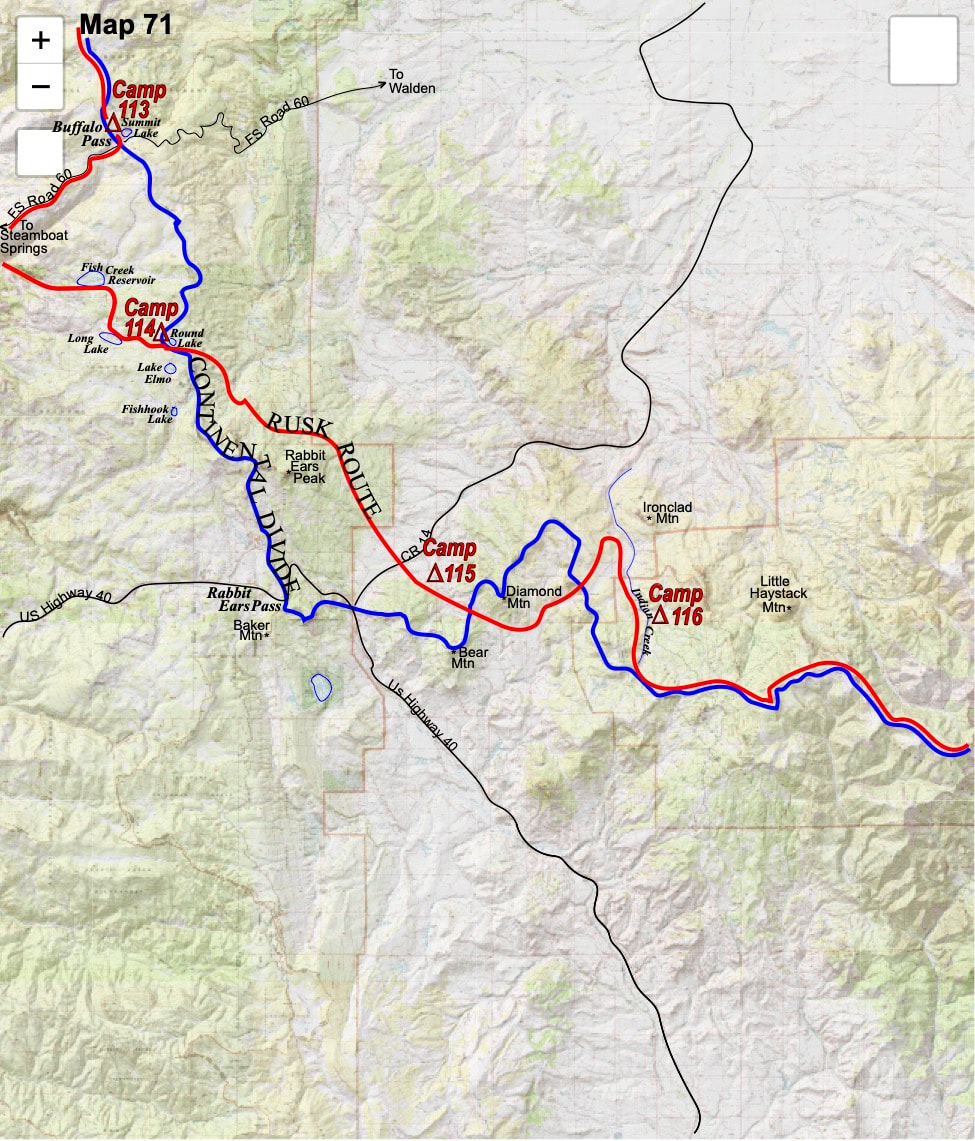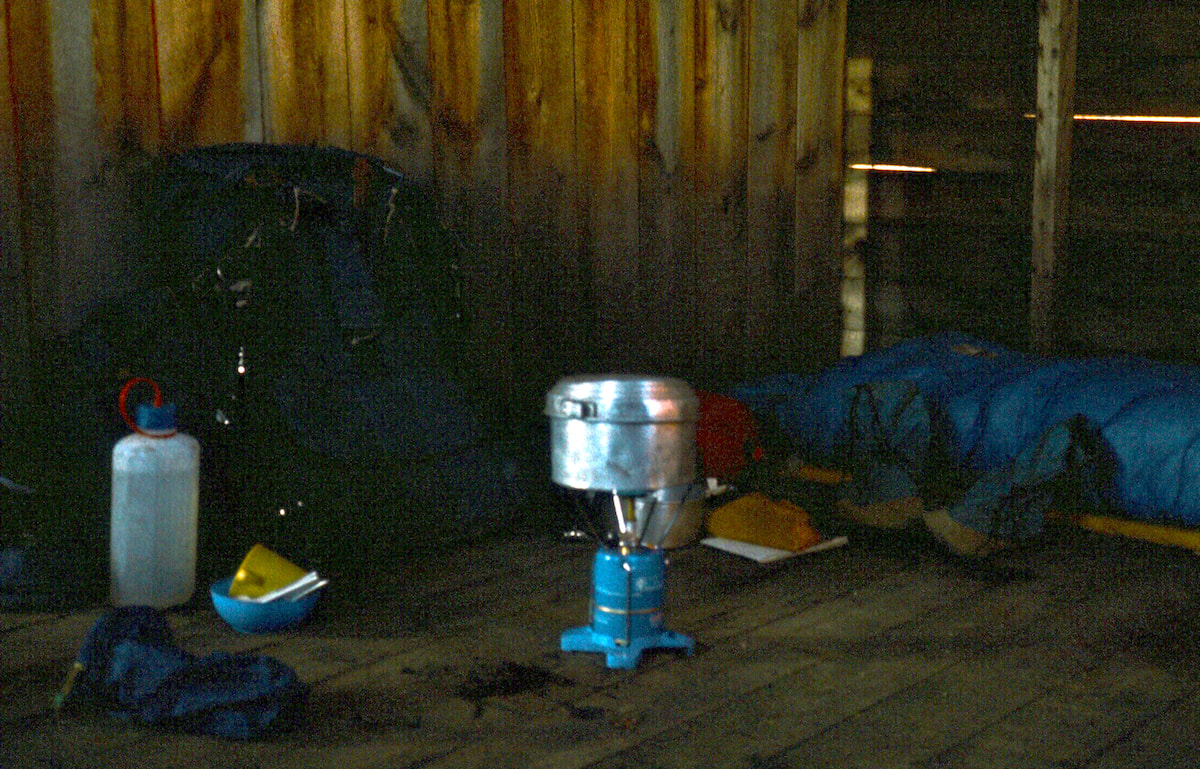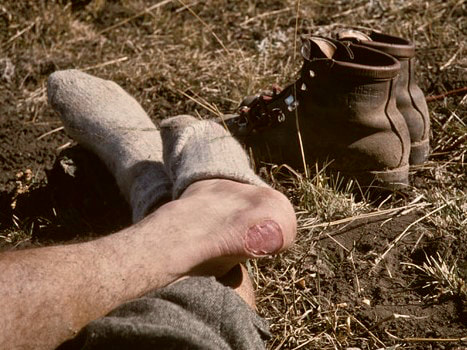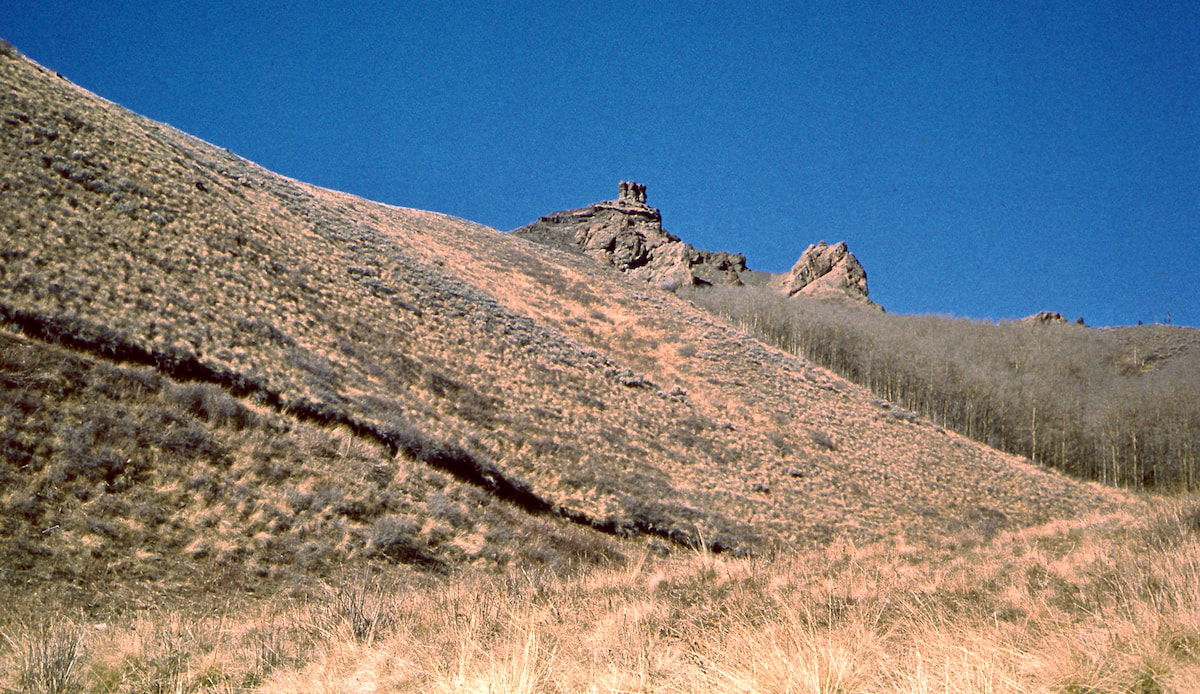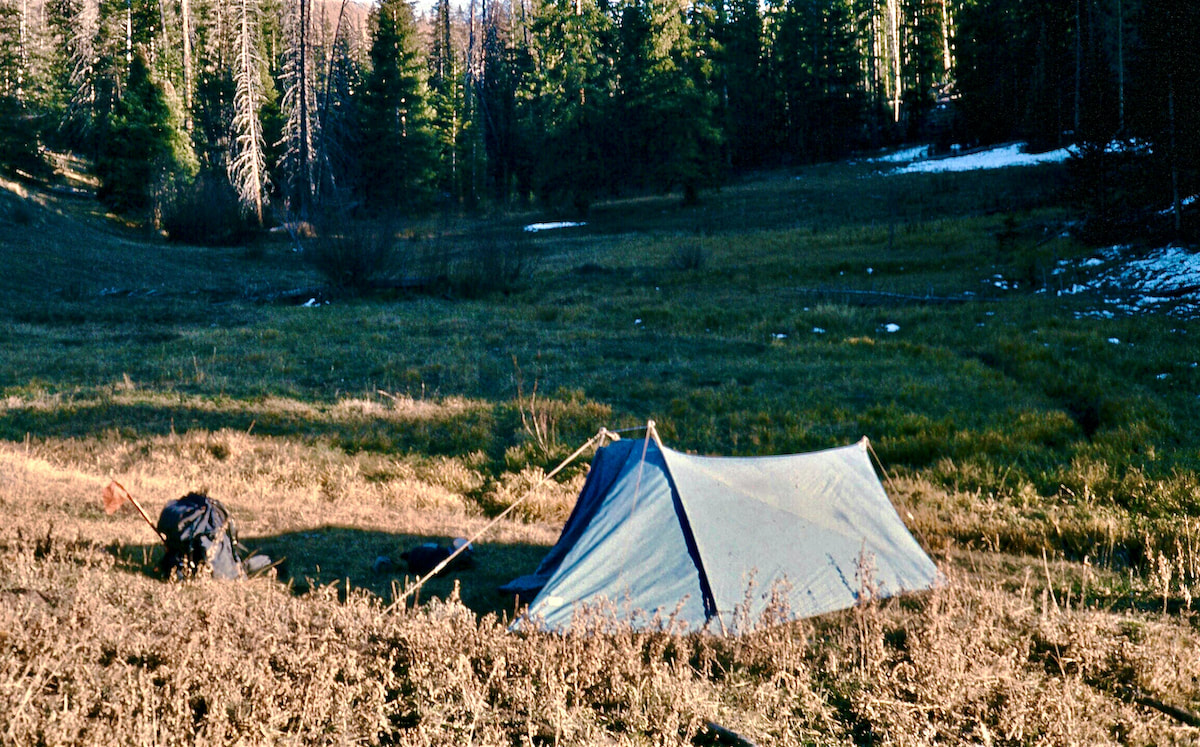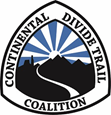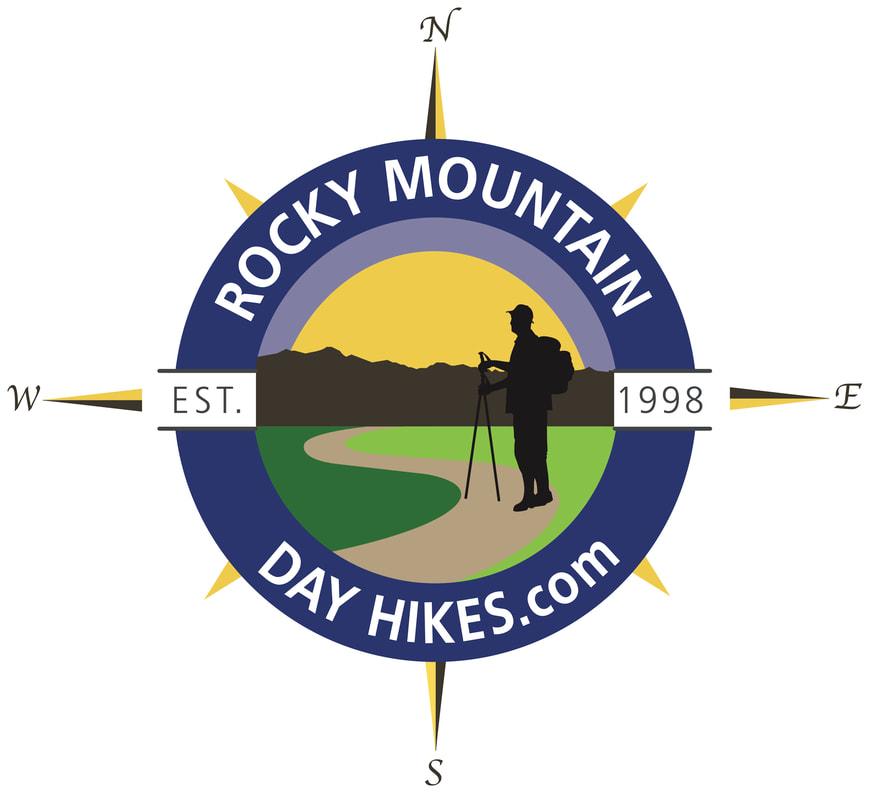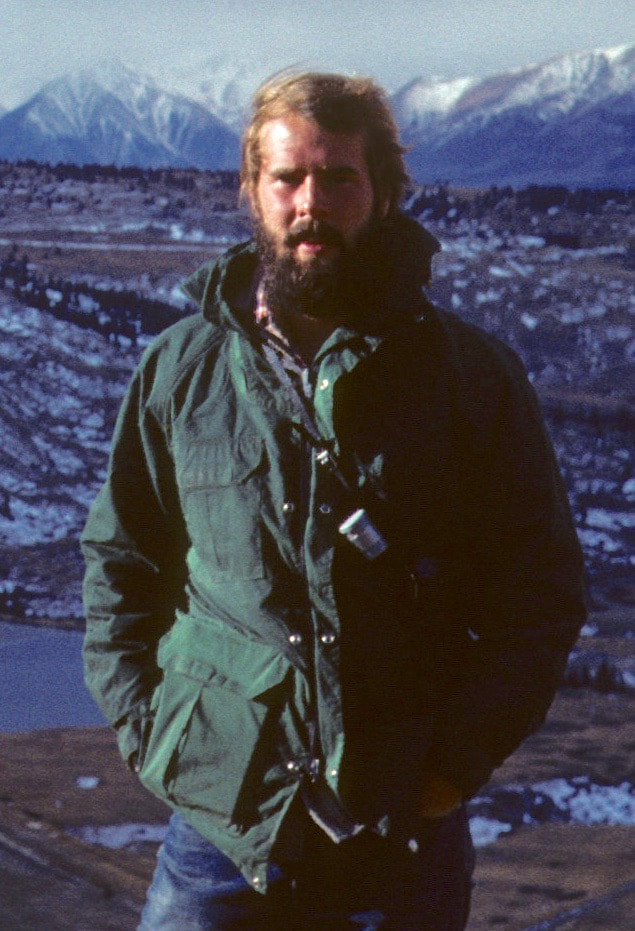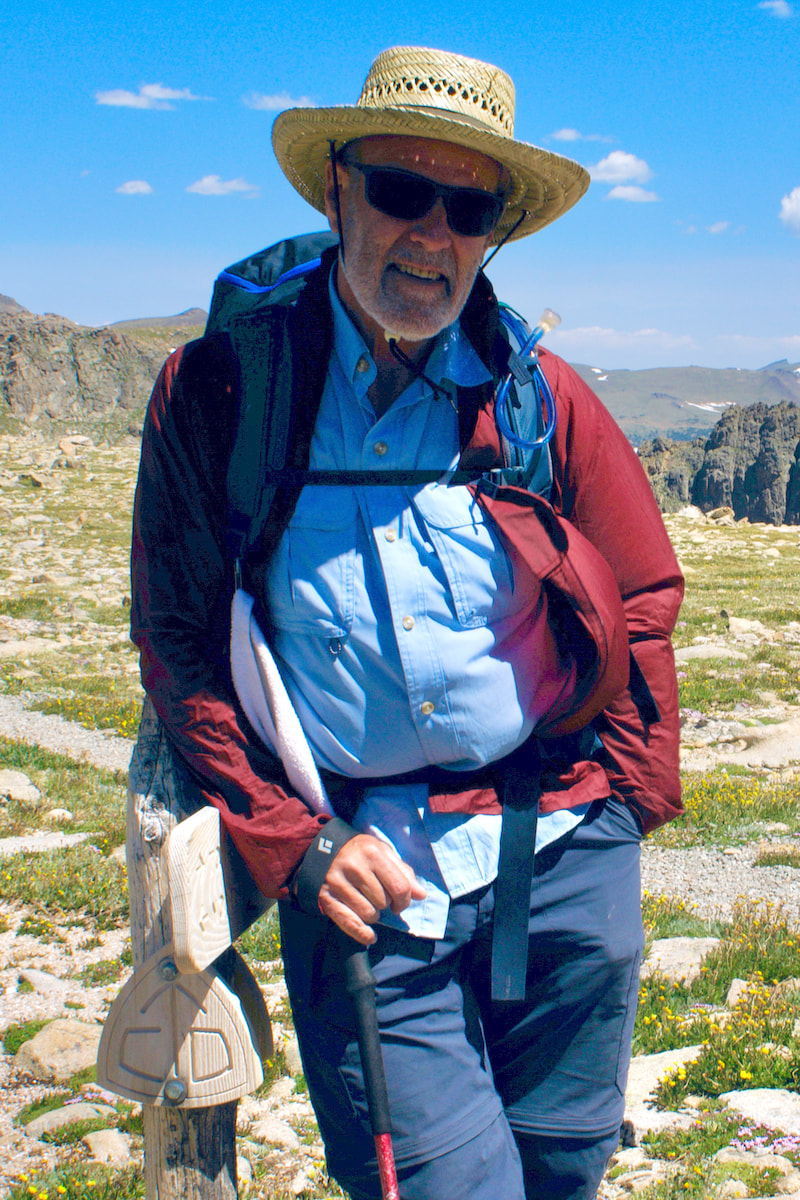The Continental
|
Maybe I was on private property but I hadn’t noticed any ‘No Trespassing’ signs or crossed over any fences to get here and the shack offered up a 5 star place to camp. So, I fluffed out my sleeping bag on the wood planks, collected water from the creek nearby then made myself comfortable and took off my boots.
I knew early in the day that I was rubbing up blisters, on both feet, but I just wouldn’t stop for the whole ordeal of addressing the problem, i.e. pulling everything out of my pack to get at the first aid kit in the bottom, taking off and putting back on boots and socks, cutting moleskin to work, re-packing all my crap – a stop like that could have cost me almost two miles in time spent.
The entire day had been an ordeal and what did I have to show for it? Butchered feet. What in the world was I doing out here, anyway. Why would anyone voluntarily put themselves through a day like this and still decide it was a good idea to get-up and do it all over again tomorrow? Seriously, what was the purpose of all of this arduous, pack-animal labor coupled with every discomfort known to modern man? I could not see a single thread of value in what I was doing right now and I was decidedly not having any fun. Fortunately, I got a good night of solid sleep without any crazy dreams and the shelter of the cabin added a layer of security. The next morning I spent the better part of half an hour applying ointment, fresh gauze and moleskin to my blistered heels then forced my feet back into the boots for break-in day three. I hobbled around camp until the pain was tolerable enough to walk then packed my gear and set-off up the final stretch of the draw. I pulled off my boots to give my feet a break and noticed blood oozing through the heel of my left sock. I was wearing a thick, hiking sock over a thin, liner sock so I pulled off the outer sock and saw a watery bloodstain across the heel of the white, liner sock. I could tell the gauze and moleskin were still mostly in place and that the liner sock was now just another bandage over the wound, so I didn’t pull it off. This was the price that I had hoped I wouldn’t have to pay for breaking-in a hard-core pair of leather, mountain boots in three days or less. But on the flipside, notwithstanding the blisters, I was winning by-God! The boots were giving in - across the toe, over the instep, and in the heel pockets, I almost had those bastards broke. Nonetheless, putting on the boots after lunch was met with an immediate pain burst followed by the initial stingers as I started to hike, but as the pained dulled out I could feel that the heel pockets were losing their teeth and I no longer felt a direct assault on the blistered area, which was true for both boots. And you know what? I was pretty darn happy about that. My afternoon consisted of a prolonged march up the Indian Creek valley to reach the creek’s headwaters just below the Continental Divide, which is where I stopped. It had been another long and difficult day and at the end I was exhausted and floundering in a state of mental wavering. My parent’s suggestion to stop and take a ‘break’ had been banging around in my head all afternoon and going home for a week or two, as my parents had encouraged me to do, was definitely wheedling around in my brain as I looked for yet another place to spend the night on the ground. Before setting-up my camp, before anything else, I pulled off my boots, socks and the oozing moleskin bandages from my heels and just sat for a while, looking at the mess I had made out of my feet. Of all the things to be careless about, the wellbeing of my feet should not have been one of them; I never should have let those blisters get away from me like that. Man, I was so freaking tired of aching, hurting feet.
From the day Craig and I had stepped out of Brian’s Jeep in Canada, there had always been a sense of insecurity and vulnerability, and for good reason, humans are just plain vulnerable to an entire kaleidoscope of calamities in the mountains. But between the two of us, it was easier to keep those calamities at bay and our spirits buoyed above the fear of them. Lately, however, situations and terrain that had previously looked fairly benign to me were now more clearly revealed as risks to me, and I was certainly more anxious about my safety than I had been while traveling through the mountains with Craig. At this point, though, I had no gauge for my ability to cover the courage void left in Craig’s absence, it was still a void, and I was having a difficult time dealing with that because I had expected from myself, or least hoped for, some kind of extra, inner strength that would have already filled that void. But so far, not much in the way of surplus confidence had risen to the surface.
0 Comments
Leave a Reply. |
Kip RuskIn 1977, Kip Rusk walked a route along the Continental Divide from Canada to Mexico. His nine month journey is one of the first, documented traverses of the US Continental Divide. Montana Part 1 - Glacier Ntl Pk Part 2 - May 11 Part 3 - May 15 Part 4 - May 19 Part 5 - May 21 Part 6 - May 24 Part 7 - May 26 Part 8 - June 2 Part 9 - June 5 Part 10 - June 7 Part 11 - June 8 Part 12 - June 11 Part 13 - June 12 Part 14 - June 15 Part 15 - June 19 Part 16 - June 23 Part 17 - June 25 Part 18 - June 27 Part 19 - June 30 Part 20 - July 5-6 Part 21 - July 7-8 Part 22 - July 9-10 Part 23 - July 11-15 Part 24 - July 17-18 Part 25 - July 18-19 Part 26 - July 19 Part 27 - July 20-21 Part 28 - July 22-23 Part 29 - July 24-26 Part 30 - July 26-30 Part 31 - July 31-Aug 1 Part 32 - Aug 1-4 Part 33 - Aug 4-6 Part 34 - Aug 6 Part 35 - Aug 7-9 Part 36 - Aug 9-10 Part 37 - Aug 10-13 Wyoming Part 38 - Aug 14 Part 39 - Aug 15-16 Part 40 - Aug 16-18 Part 41 - Aug 19-21 Part 42 - Aug 20-22 Part 43 - Aug 23-25 Part 44 - Aug 26-28 Part 45 - Aug 28-29 Part 46 - Aug 29-31 Part 47 - Sept 1-3 Part 48 - Sept 4-5 Part 49 - Sept 5-6 Part 50 - Sept 6-7 Part 51 - Sept 8-10 Part 52 - Sept 11-13 Part 53 - Sept 13-16 Part 54 - Sept 17-19 Part 55 --Sept 19-21 Part 56 Sept 21-23 Part 57 - Sept 23-25 Part 58 - Sept 26-26 Colorado Part 59 - Sept 26 Part 60 - Sept 30-Oct 3 Part 61 - Oct 3 Part 62 - Oct 4-6 Part 63 - Oct 6-7 Part 64 - Oct 8-10 Part 65 - Oct 10-12 Part 66 - Oct 11-13 Part 67 - Oct 13-15 Part 68 - Oct 15-19 Part 69 - Oct 21-23 Part 70 - Oct 23-28 Part 71 - Oct 27-Nov 3 Part 72 - Nov 3-5 Part 73 - Nov 6-8 Part 74 - Nov 9-17 Part 75 - Nov 19-20 Part 76 - Nov 21-26 Part 77 - Nov 26-30 Part 78 - Dec 1-3 New Mexico Part 79 - Dec 3-7 Part 80 - Dec 8-11 Part 81 - Dec 12-14 Part 82 - Dec 14-22 Part 83 - Dec 23-28 Part 84 - Dec 28-31 Part 85 - Dec 31-Jan2 Part 86 - Jan 2-6 Part 87 - Jan 6-12 Part 88 - Jan 12-13 Part 89 - Jan 13-16 Part 90 - Jan 16-17 Part 91 - Jan 17 End |
© Copyright 2025 Barefoot Publications, All Rights Reserved

